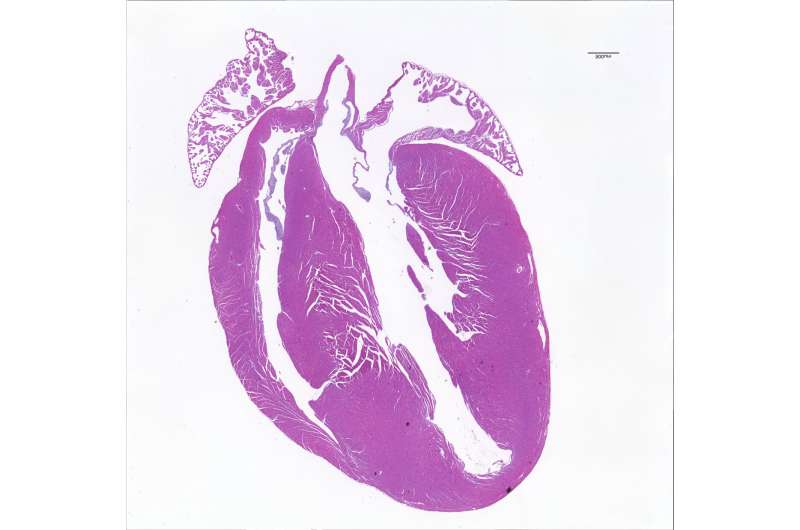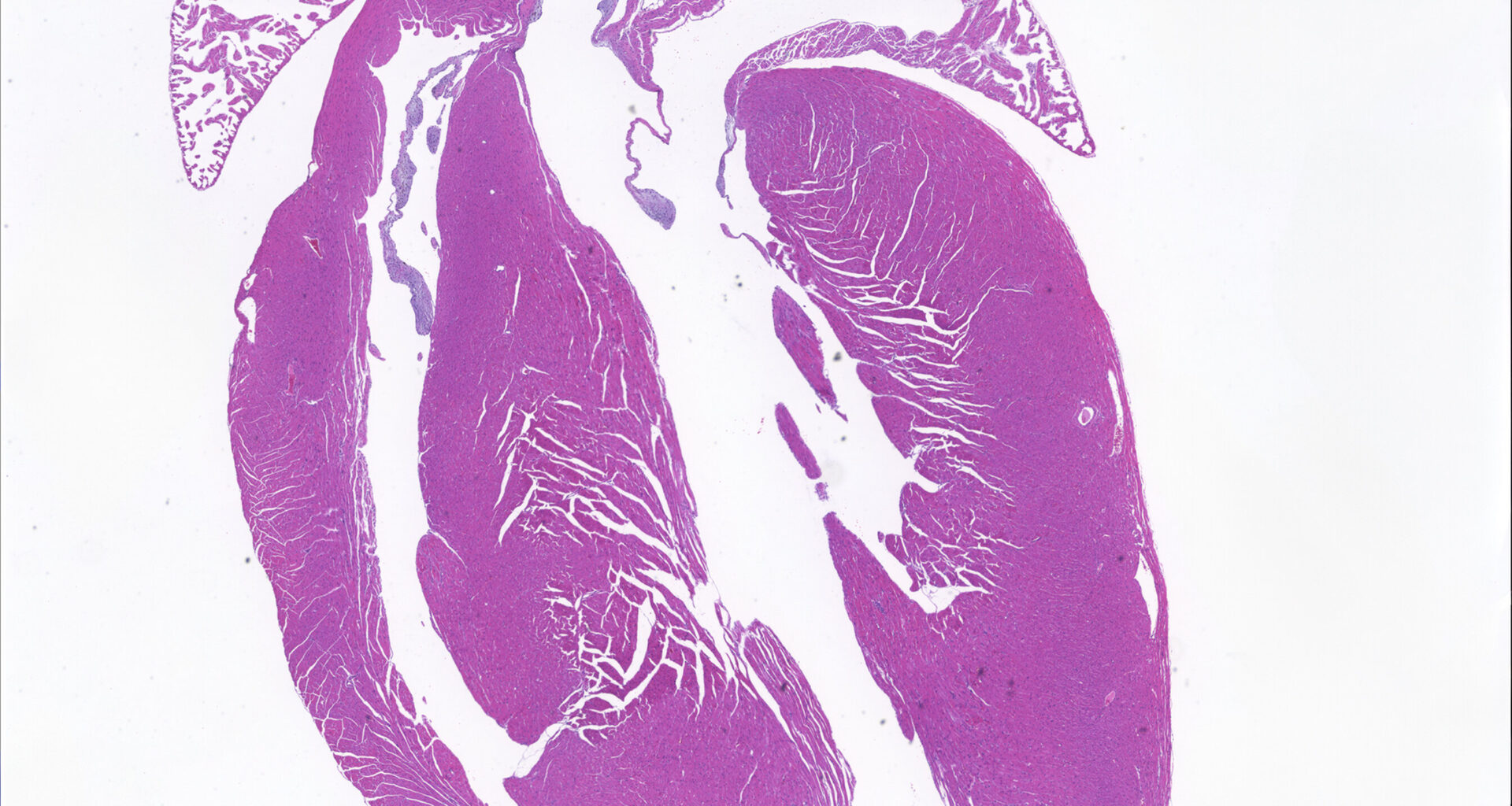
Researchers used a technique called base editing to correct a mutation in the lamin A gene. At 8 months old, heart cross sections from treated mice resembled those of normal healthy mice. Credit: Xurde Caravia
Faulty versions of the LMNA gene can cause a wide range of health problems, including heart muscle disease (dilated cardiomyopathy) and muscle weakness (muscular dystrophies). Many of these diseases are caused by single-point mutations, which are changes to one DNA “letter” (base). Treatments include physical therapy and lifelong medication, but there are currently no cures. That could change following the work of a team of scientists who have developed and successfully tested a gene editing technique to correct the underlying genetic mutations.
Researchers led by Eric Olson at the University of Texas Southwestern Medical Center used a method called base editing, which has been used previously to correct other genetic heart diseases, but never before on these specific LMNA mutations. Unlike older editing tools, which create double-strand breaks in the DNA, base editing works like a “pencil” and “eraser” to change a single base in a patient’s genome.
In a paper published in the Proceedings of the National Academy of Sciences, the team describes how they used this precise form of gene editing to first correct mutations in human heart muscle cells grown from patients with the LMNA-related diseases.
The researchers used two different base editors. They built an ABE (Adenine Base Editor) to seek out the R249Q mutations that cause dilated cardiomyopathy and change it back to the healthy base. For muscle disease, they created a CBE (Cytosine Base Editor) to fix the specific L35P mutation. The result? The cells were corrected.
To see if their treatment would work in a living body, the team created mouse models with the same LMNA mutations and delivered the base editors using a harmless virus that targets heart and muscle cells. For the mice with heart disease caused by the R249Q mutation, the base editors improved heart function and extended their lives by around 80%. For mice with heart disease caused by the L35P mutation, base editing prevented the development of heart disease.
“Our work represents an important step toward the potential clinical correction of cardiomyopathies using gene editing tools,” commented the researchers in their paper.
While undoubtedly a significant step forward in curing these genetic diseases, there are still several hurdles to clear before this treatment can help patients. These include proving long-term safety to show there are no unintended DNA changes and ensuring that the body rejects the treatment. But if the research ultimately turns into therapy, patients could be offered a one-time injection that would cure their disease and improve their quality of life.
Written for you by our author Paul Arnold, edited by Gaby Clark, and fact-checked and reviewed by Robert Egan—this article is the result of careful human work. We rely on readers like you to keep independent science journalism alive.
If this reporting matters to you,
please consider a donation (especially monthly).
You’ll get an ad-free account as a thank-you.
More information:
Xurde M. Caravia et al, Precise gene editing of pathogenic Lamin A mutations corrects cardiac disease, Proceedings of the National Academy of Sciences (2025). DOI: 10.1073/pnas.2515267122
© 2025 Science X Network
Citation:
Precise gene editing technique changes one DNA base to correct heart disease (2025, October 14)
retrieved 15 October 2025
from https://medicalxpress.com/news/2025-10-precise-gene-technique-dna-base.html
This document is subject to copyright. Apart from any fair dealing for the purpose of private study or research, no
part may be reproduced without the written permission. The content is provided for information purposes only.

